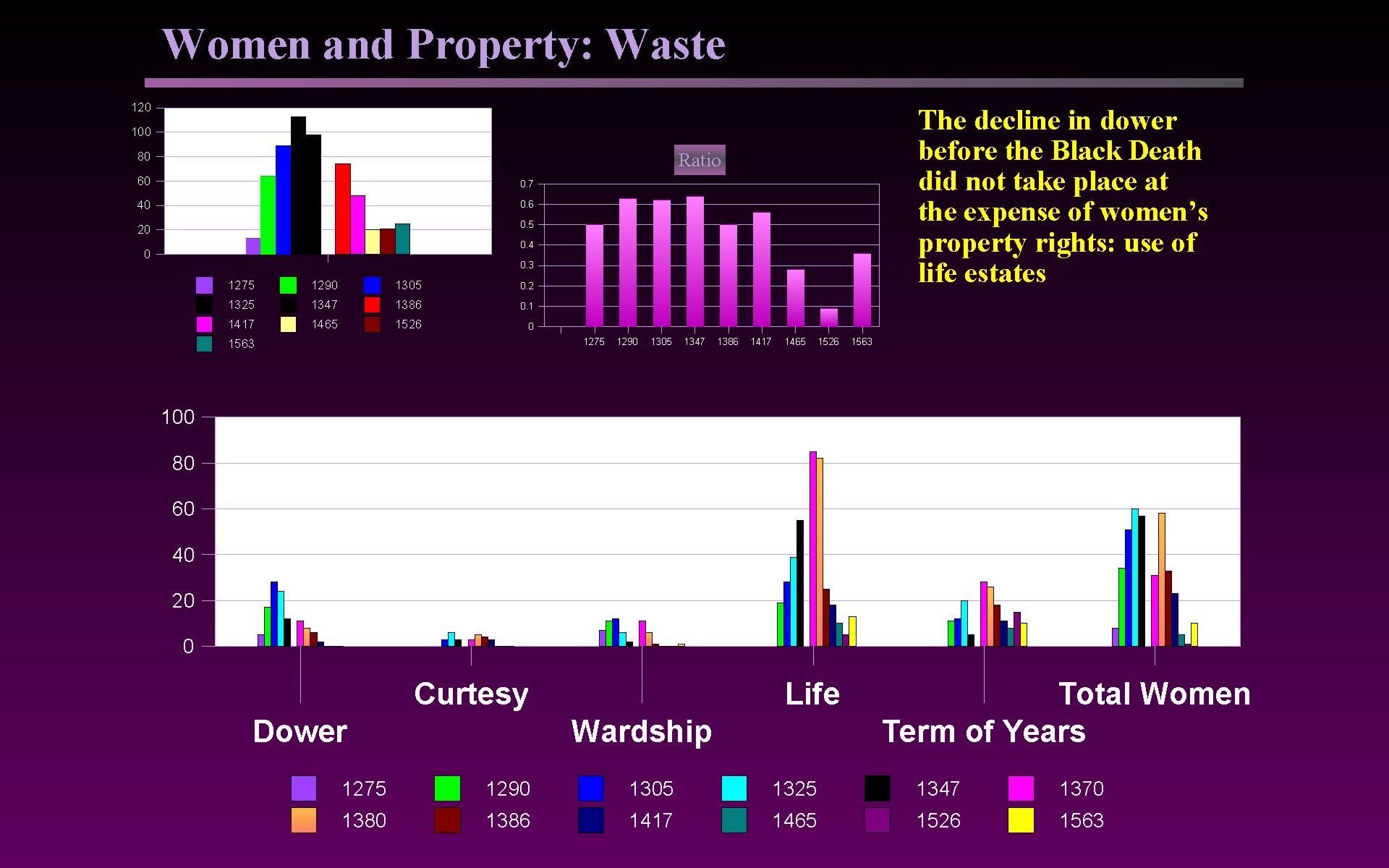


Women's Property Rights: The Action of Waste
The action of waste allowed the owner of the fee simple to recover damages from the legal possessor of real estate who held a more limited interest, whether a life estate or a term of years. The first graph indicates the number of actions of waste in a Trinity term in the respective years. The second graph gives the gender ratio for defendants in those actions. The continuing high number of women holding dower or life estates through to the Black Death confirms the assertion that heirs provided substitute life estates instead of making the widow pursue dower litigation, while the declining number after the Black Death confirms the lower social frequency of dower then. The high frequency of women in life estates even in 1380 would indicate that men were actually providing for their surviving spouse in significant numbers. The long term decline in women defendants would indicate an increasing social attitude that, regardless of the legal capacity of women to hold real estate, it was inappropriate for women to do so: they should be provided for otherwise.

AALT Homepage





